HOW TO FUEL FOR A MARATHON
FUELING SUGGESTIONS FOR A HALF OR FULL MARATHON
We receive a lot of phone calls and emails from runners looking for the best method of fueling for a half or full marathon. This article will present a couple of options that I believe will help take the guesswork out of both pre-race and race fueling so that you can get the very most out of your body while enjoying the race more. You won't have to worry about running out of energy or suffering GI issues from the wrong fuels or incorrect amounts of the right ones. In fact, you may very well find yourself finishing with a personal best, courtesy of an intelligent training program, tapering wisely before the race, and fueling properly during all of your workouts as well as the race itself. Ready? Let's do it!
Success in your race starts a lot earlier than you think!
The first bit of fueling strategy for completing a half or full marathon successfully and strongly is something you actually do weeks before the race, and that is "refilling the tank" ASAP after all of your workouts leading up to the race. I am zealous about the importance of consistent, proper, immediate post-workout refueling; in fact, I am convinced that it is equally as important as anything you do in the actual workout.

Post-workout refueling is discussed in greater detail in the article "Recovery - A crucial component for success" in The Endurance Athlete's GUIDE to SUCCESS, and I encourage you to read and apply the principles outlined in that article. In cutting to the chase, however, the main thing you must do is to replenish your body with adequate amounts of carbohydrates and protein ASAP after all of your workouts. The oft-used phrase, "striking while the iron is hot" absolutely applies to many aspects of recovery, especially in regard to muscle glycogen synthesis and storage, as well as the rebuilding of lean muscle tissue. So before you get out of your sweaty running clothes, before you hit the shower, and before you get horizontal and relax for a few hours, put some fuel back into your body. Recoverite takes care of this important aspect of athletic performance easily and ideally.
By doing this, you take advantage of the glycogen synthase enzyme when it's most active, and you will enjoy a HUGE advantage over those athletes who either waited too long or blew off post-workout refueling. The combination of your training and consistent post-workout fuel replenishment will increase muscle glycogen stores, muscle glycogen being the first fuel used by the body when exercise begins. Train wisely and refuel consistently after all of your workouts, and you can accrue up to 90 minutes of this premium, ready-to-use fuel. Wait too long to replenish your body with ample amounts of carbohydrates and protein, or neglect to do so entirely, and you'll gain little to nothing in the way of increased amounts of muscle glycogen. Which would you rather have when the gun goes off, only a few minutes of onboard fuel or up to 90 minutes? The answer should be a no-brainer!
What to do in the days leading up to the race

1# - Avoid the temptation to train too much and/or too close to race day.
You will not be able to positively influence your fitness level in the days leading up to the race; however, you can negatively impact your race by training during that time (training meaning anything of significant duration or intensity). Highly respected athlete and coach Nate Llerandi suggests a two-week taper for a half marathon and up to a month for a full marathon. Coach Llerandi states, "The longer your race, the longer you taper. The shorter your race, the shorter you taper. The best thing you can do for yourself in the final weeks leading up to a major competition is to rest and relax. This doesn't mean 'kick back in a chair,' but rather significantly cut your volume and slightly increase the intensity of your hard workouts (as they get shorter as well). If you've put the work in and have been honest with your efforts, you'll hit the starting line ready to turn in your best performance to date."
HINT: Best results in long-duration events such as half or full marathons are achieved by getting to the starting line well rested rather than razor sharp. In doing so, you may find yourself not hitting on all cylinders during those first few minutes. In fact, you might even struggle a bit at the beginning of the race. However, your body will not forget all the training you've done, and it will absolutely reward you for giving it the time it needed to "soak up" all of that training.
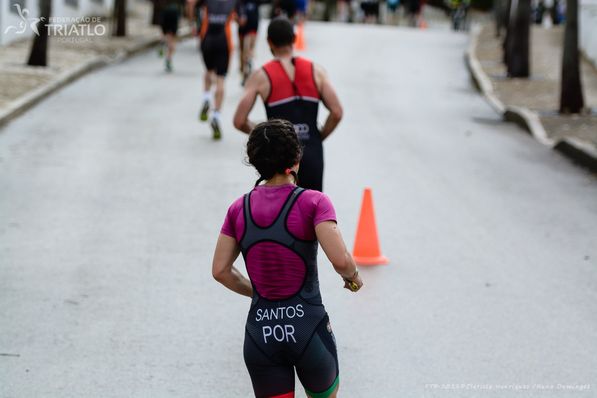
2# - In the days leading up to your race, don't let your diet deviate too much from what got you there in the first place.
Your dietary habits already brought you where you are. Our suggestion is focused in a particular way on not overloading yourself with fluids, carbs, and/or sodium, and we are gonna tell you the reason behind it.
FLUIDS - Don't drink excessive amounts of water in the hopes of getting a head start on your fluid requirements for the race. Consumption of roughly 0.5-0.6 of your body weight is a good gauge for how much water you should be consuming daily. (Example: A 180-lb athlete should drink approximately 90-108 ounces of water daily.) However, if you haven't been following this recommendation consistently, don't start now, as this will overwhelm your body with too much fluid too soon, which may increase the potential for hyponatremia.
CALORIES - Don't stuff yourself with extra food assuming that you're "carbo loading." The time period for carbohydrate loading (i.e., maximizing muscle glycogen storage capabilities) has, for all intents and purposes, passed. In essence, "carbo loading" is what you did in the first 60 minutes after all your workouts leading up to the race. That's when the glycogen synthase enzyme - which controls glycogen storage - is most active, and that's how you topped off your glycogen stores. Any excess food you eat in the days leading up to the race is either going to be passed through the bowels or stored in adipose cells . . . neither of those things will benefit you. Now, in the week leading up to the race, if you want to slightly alter the ratio of carbohydrates, protein, and fat you consume - favoring carbohydrates over protein and fat - that's fine; just remember not to over-consume food in general.
SODIUM
- Don't consume extra sodium (salt) in the hopes that you'll be topping off your body stores prior to the race. The average American already consumes approximately 6,000-8,000 mg/day (if not more), an amount well above the upper end of the recommended dose of 2,300- 2,400 mg/day, so there is absolutely no need to increase that amount in the days prior to the race. (Hint: Adopting a low-sodium diet will do wonders for both your health and athletic performance.) High sodium intake, especially in the days leading up to the race, is a recipe for disaster because it will greatly increase the potential for disruption of the hormonal mechanisms that control sodium regulation, recirculation, and conservation. In the days leading up the race, be especially cognizant of the salt content in your foods, especially if you go out to eat. Restaurant food is oftentimes loaded with sodium, so dining out can dramatically increase your already high salt intake.
What about the night before the race?
Very simple: Eat clean, eat until you're satisfied, and then call it a night. You can't positively affect muscle glycogen storage capabilities the night before the race, a time when the glycogen synthase enzyme is inactive. Consume complex carbohydrates, some high-quality protein, and low-to-no saturated fat. Make sure your meal is low in sodium, and be sure to drink sufficient amounts of water (but not too much). Skip the alcohol, fatty foods, and dessert . . . save those "rewards" for after the race.
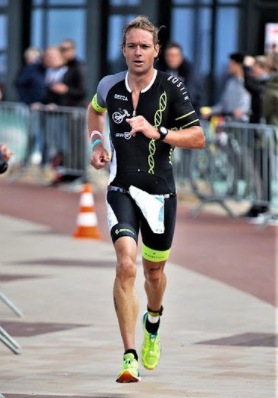
What to do the morning of the race?
If your race is going to take you more than 60 minutes, do not consume any calories three hours prior to the race. Remember, the first fuel your body will use when the race begins is muscle glycogen again, this is why consistent post-workout refueling is so vital. Eating a pre-race meal at the wrong time will create an internal "environment" in which your body will burn through its finite stores of glycogen at a much more rapid rate, negatively impacting your performance.
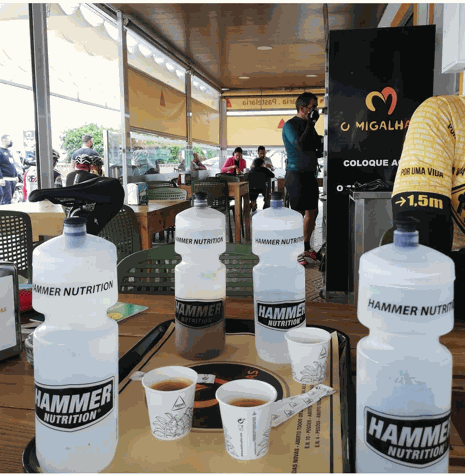
HINT: don't sacrifice sleep to eat; it's neither beneficial nor necessary. Instead of eating 1-2 hours prior to your race, a better strategy is to consume 1-2 servings of Hammer Gel approximately 5 minutes prior to the start. That will top off liver glycogen stores nicely (the goal of the pre-race meal) and provide some calories to augment muscle glycogen stores, but without negatively affecting how muscle glycogen is utilized.
What about pre-race hydration?
Either of the following sensible suggestions will satisfy hydration needs without putting you at the risk for overhydration. Keep in mind that these are our recommendations; you need to determine what works best for your system and the particular logistics of the race ahead.
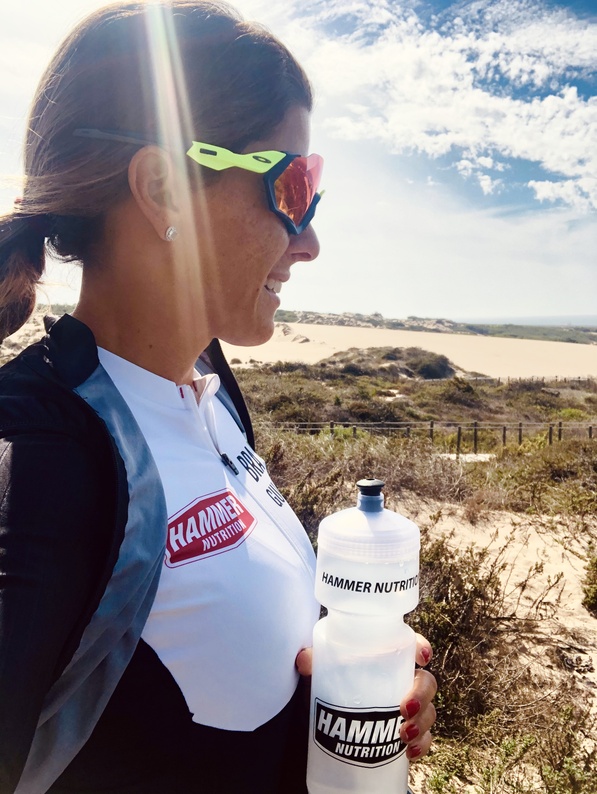
-
One liter of water (about 34 oz.) in the two hours prior to the start (about 17 oz./hour), ceasing consumption about 20-30 minutes before the workout or race.
-
10-12 oz. of water each hour up to 30 minutes prior to the start (24-30 oz. total fluid intake).
-
30-45 minutes prior to the race is Endurolytes time!
HINT: I suggest taking a "pre-emptive strike" dose of Endurolytes (with water) about 30 minutes prior to the race. Endurolytes prior to the start will provide electrolytic mineral support for at least the first hour of the race, which will allow you to get into a nice, smooth rhythm during the initial part of the race (which is usually quite hectic), and without having to think about consuming pills.
If you are taking additional supplements such as Endurance Amino or Anti- Fatigue Caps, this is also the time to take your initial dose of those two products.
Fueling for your race: variables that affect fuel selection
When exercise goes beyond two hours, I generally recommend that athletes use a "carb + protein" fuel (Sustained Energy or Perpetuem), either as their sole fuel from beginning to end, or as their primary fuel (roughly 2/3- 3/4 of the time). The reason for this recommendation is that once you hit that second hour and beyond, a small percentage (roughly 5-15%) of your energy requirements will be fulfilled from protein. If you don't provide some in the fuel mix, at least part of the time, your body has to cannibalize lean muscle tissue to obtain the amino acids it needs to fulfill that small percentage of its energy requirements.
The last thing you want is to have your body literally digest its own muscle tissue to make fuel, primarily because this increases fatigue-causing ammonia; there is no doubt that excess ammonia is a primary culprit - perhaps THE primary culprit - in premature fatigue during endurance events. In addition, you'll have broken down a greater volume of muscle tissue, which will prolong recovery time.
Things may (key word "may") be a little different come race day. I believe that a race in the 2-3 hour range such as a half marathon, and races just slightly longer (perhaps in the 3.5-hour range, a finish time typical for many marathoners), are in a "gray area," so to speak. This means you have more fueling options available. You can use:
-
A "carb + protein" fuel (Sustained Energy or Perpetuem) as your primaryto- sole fuel
-
A "carb only" fuel (Hammer Gel or HEED) as your sole fuel
-
A combination of a "carb only" fuel (Hammer Gel or HEED) and Perpetuem Solids
Note: Refer to Hammer Nutrition's Product Usage Manual for hourly dosage suggestions.
What you choose to use as your fuel needs to be based on the following:

#1 - The duration of the race:
If you're doing a half marathon and plan to have it completed in roughly 3 hours or less, you can do the whole thing on muscle glycogen stores plus a "carb only" fuel (Hammer Gel or HEED). Ditto for a marathon that will be completed in approximately 3.5 hours or less. Yes, you will break down a little lean muscle tissue and produce a bit of excess ammonia during the latter portion of the race. However, in a race that takes 3-3.5 hours (or less), I do not consider the ammonia "issue" to be truly problematic, especially when taking into account the other factors listed below. Why? Because by the time muscle tissue breakdown and ammonia accumulation truly becomes an issue, your race will have long since been completed.
HINT: If your race is going to take you longer than 3-or-so hours to complete, then yes, you will want to use Sustained Energy or Perpetuem as your primary-to-sole fuel. A combination of Hammer Gel or HEED + Perpetuem Solids would be acceptable as well. But for efforts lasting 3-3.5 hours again, taking into account the other variables listed below I believe it is perfectly acceptable to go "carbs only."
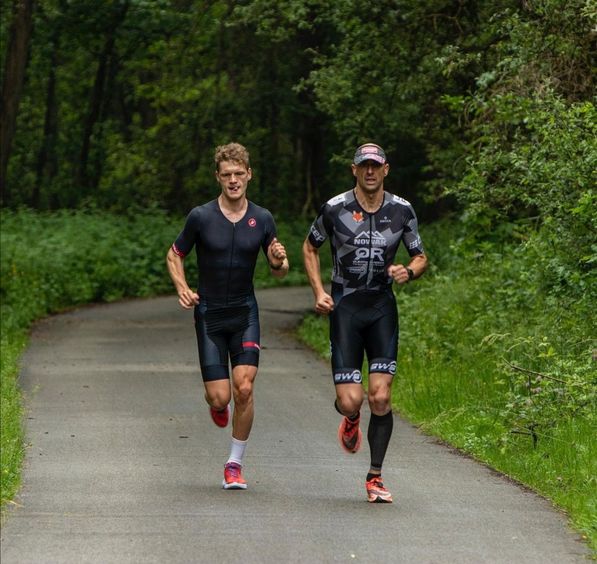
#2 - How well your body is able to digest a particular Fuel
Running is a more jarring type of exercise than other sports such as road cycling, and this may make it a bit more challenging for runners to digest a concentrated fuel such as Sustained Energy or Perpetuem as compared to Hammer Gel or HEED. To find out how your body responds to a particular fuel, thorough testing in training is essential.

#3 - The intensity of the effort.
The intensity of the effort. It's a lot easier to digest calories when the pace is more relaxed, which is more typical during a training session than during a race. That's why we suggest having a fueling game plan but to "write it in pencil, not in ink," meaning caloric intakes that worked during training may not be appropriate during a race; you may need to consume slightly less in a race than you did during training. Increased anxiety, increased pace, and increased potential for dehydration all contribute to the possibility of your digestive system functioning at less than optimal levels. In addition, at the increased pace during a race, more blood is diverted from digestion and directed toward maintaining muscle performance.

#4 - The weather
It all depends on how well or poorly you're acclimated to it. The hotter the weather, the more compromised the digestive system becomes. During hot-weather racing, athletes usually find that they need to increase their water and Endurolytes intake while lowering their caloric intake.

#5 - The Terrain
A race that involves a lot of climbing or lots of terrain changes almost always diminishes digestive capabilities to some degree.
Conclusions:
As you can see, you have a lot of options available to you, with a number of variables that need to be factored in to determine what works best for you. Testing a variety of these fueling options in your training, under a variety of conditions, will allow you the greatest potential for success come race day. Don't forget Hammer Nutrition's two fantastic knowledge resources: The Endurance Athlete's GUIDE to SUCCESS and The Hammer Nutrition Fuels & Supplements - Everything You Need to Know. You can also purchase hard copies or download both booklets free of charge from the Hammer Nutrition website (that's right, FREE!). Lastly, please remember that we have a skilled team of client advisors who are ready to help you get your fuel and supplement program dialed in; we're but a phone call or email away!






